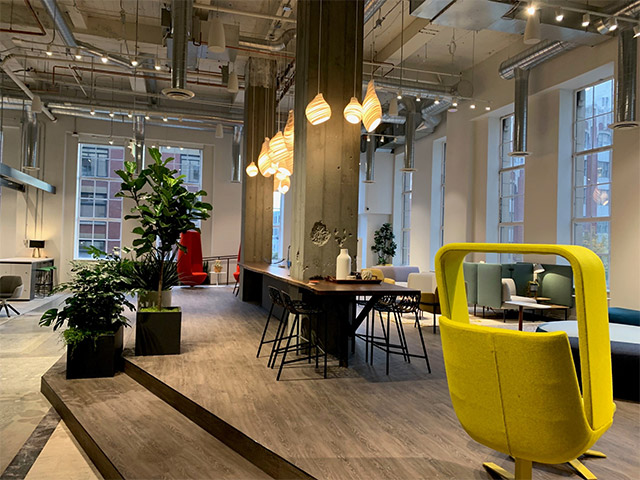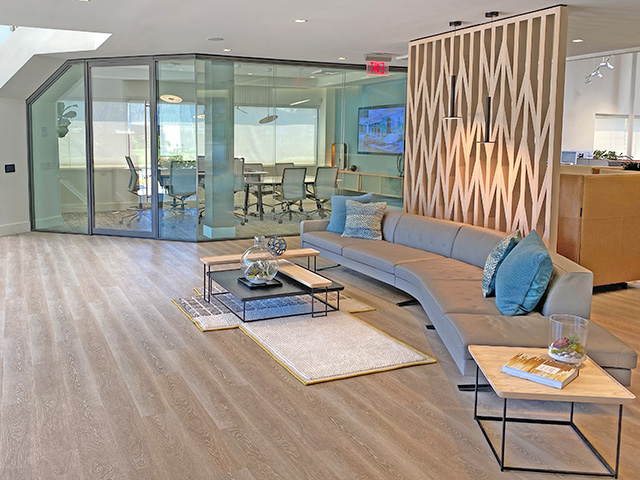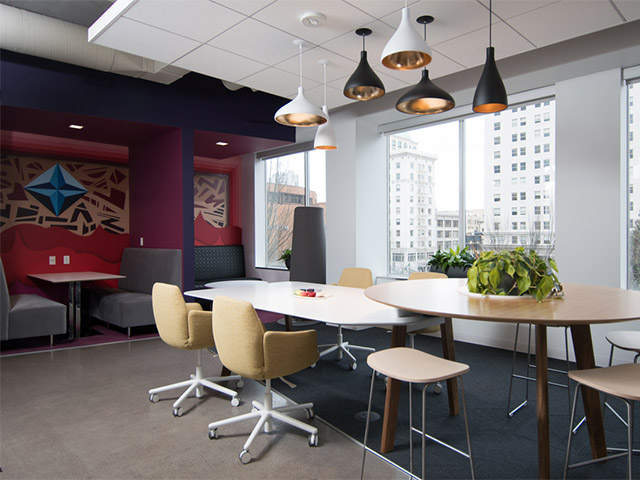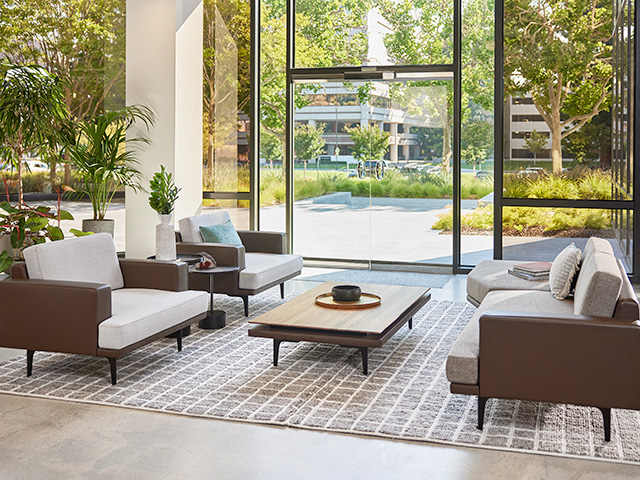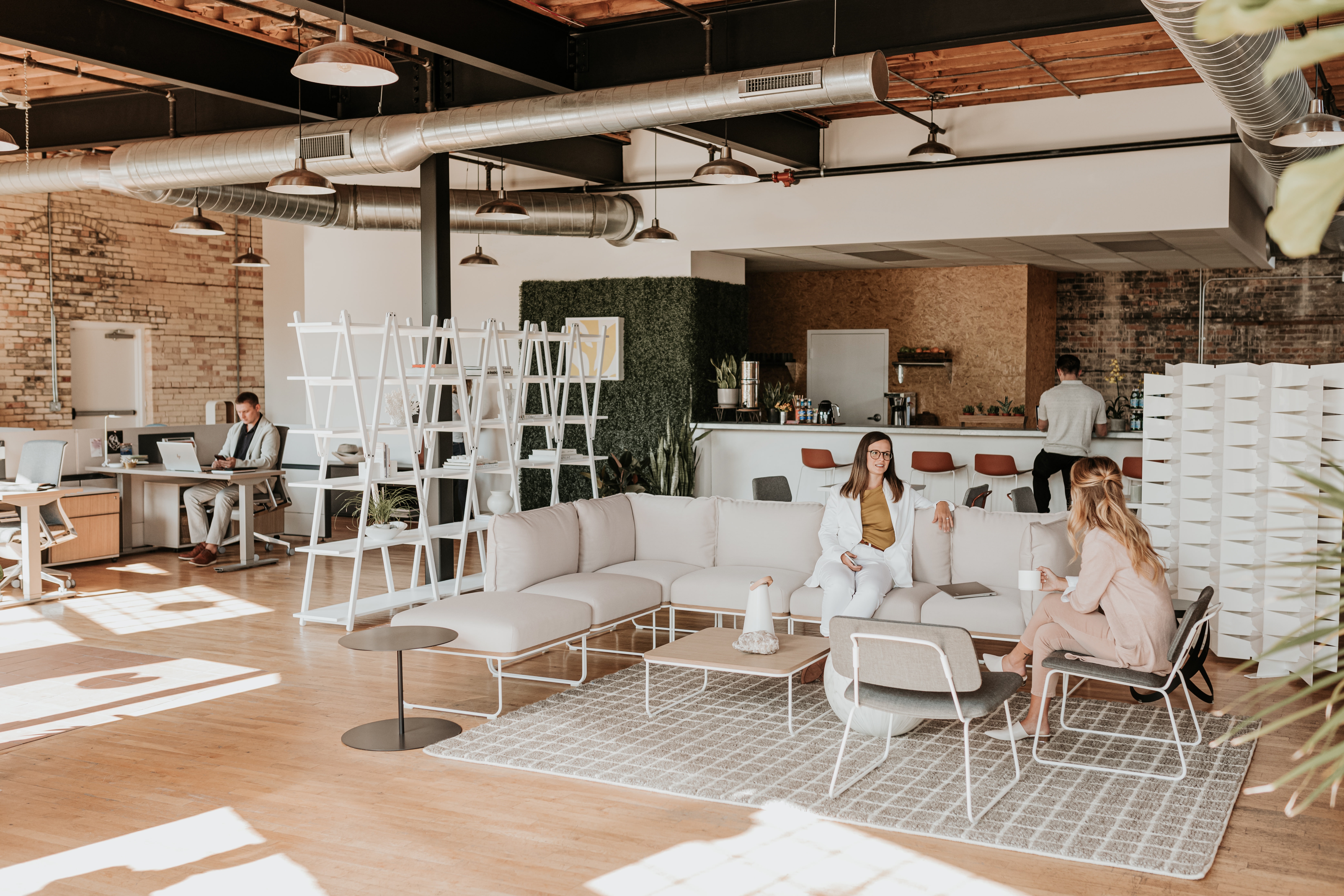
by Emme Ratcliffe
Ancillary means supporting the function/s of the primary products or providing additional help or support to the primary activities or operation of an organization, institution, industry, or system. When thinking of ancillary in the workplace, it is a word to describe all the minor aspects or spaces that make workspaces more productive. Ancillary is not only a word to describe objects, but it can also be a place of “in-between or social spaces” such as a café, outdoor space, lobby, or a lounge for employees to step outside of the office for a change of scenery.
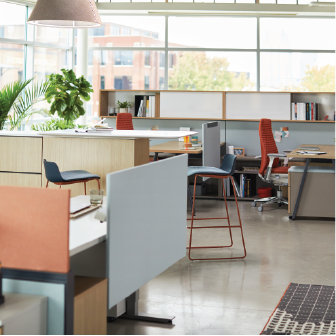
Privacy Screens – This accessory provides employees with boundaries in the workplace and personal space while still giving the organization a contemporary open floor plan and design. These screens are used to improve focus and productivity at work, but they are also short enough to be able to ask your coworkers any questions or help is necessary or in a team setting. Although these are short enough to work as a team, they may also come in honeycomb cardboard or fabric-covered wood to absorb sound if more privacy is needed. Privacy screens allow the employees to make their workspace their own for comfort while still looking clean, such as having many cords, work notes, images hidden. Screens can bring color and dimension into any workspace with many different fabrics, mediums, and colors.
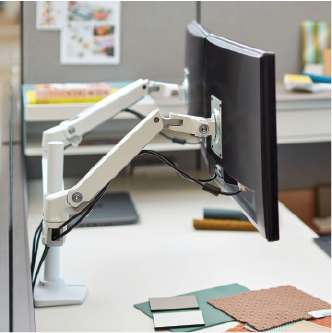
Monitor Arms – This accessory is a supportive bracket or arm designed to hold up or adjust a single monitor or multiple monitors to add ergonomic accommodations for your team members. A monitor arm can be mounted to a table or desk by a clamp or a grommet hole. Clamp mounts have the advantage that they can be moved without damaging the desk or table. Your employees have a full range of motion with this accessory and can position their monitors right where they need them – tilt, swivel, rotate, raise, and lower.

Shelving & Storage – Having a personal space to store belongings benefits employees by securing their possessions and reducing the amount of clutter stored in the workspace. Employees may worry about the storage of their workspace due to a lack of security and protection provided by unsecured, regular lockers found within the premises.
Shelving, lockers, or storage accessories are necessary for any clutter or personal belongings in a workspace. A cluttered workspace leaves employees scrambling for pens, papers, and other significant necessities. When your employees have easy access to their workspace essentials, they can spend more time on tasks that increase profitability. Having a clean work area minimizes distractions and allows your employees to focus on the duties at hand. In this way, you get a more significant return on your labor investment, improving your bottom line.

Technology Accessories – These accessories are a vast range of tools to support your employee’s comfort and productivity in the workplace. Keyboard trays are height adjustable trays to support many ergonomic postures, along with providing a pad to support wrists in a neutral position. Power strips are also a necessary accessory when it comes to needing multiple outlets and USB configurations. Power strips are available in many different lengths with options of the number of outlets and can be mounted to fit your needs.
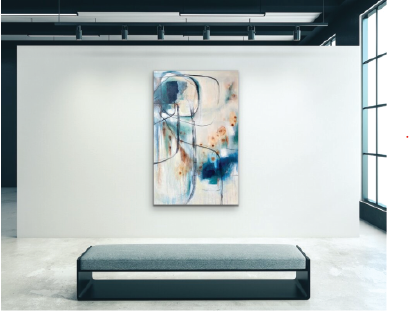
Artwork – According to studies, many employees stated that artwork brings uplifting energy, physical and mental well-being, resulting in productivity in the workplace. Viewing art, predominantly realistic nature scenes, helps employees restore mental energy and reduce stress. Unsurprisingly, both of these effects boost brain performance. Amidst many options for addressing branding and company culture in the workplace, art can help communicate key brand messages non-verbally.
Two of our PeopleSpace Customer Experience Centers have artwork by Brittnee Sylvester, a Mixed Media and Oil Professional Artist with a touch of Hopeful Abstract-Realism. And three of our Customer Experience Centers feature artwork by Stanley Felderman of Felderman Keatinge & Associates, an artist, and architect who takes a painterly approach to color, intuitive and experimental. Felderman has been featured in the Museum of Modern Art and the Whitney Museum and pioneers the “total design concept.”
“I believe that artists hold the power in this world to not only influence our peers but also promote emotion and connection with each other through the beauty of art” – Brittnee Sylvester
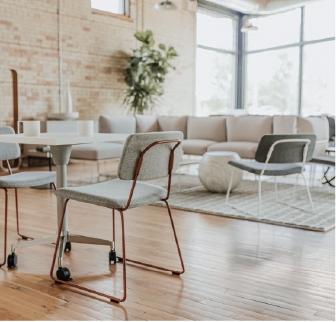
Seating - Ancillary seating includes but is not limited to sofas, guest chairs, side chairs, benches, lounge, poufs, and stools. These are all pieces that bring comfort and assist in making a more welcoming environment. Seating arrangements play a vital role in the general values of the workspace and can be treated as one factor determining the organization’s culture.
When given a choice, people are drawn to the places that make them feel the best and most productive. What we’ve known as the “office” has evolved into a place of social context and a feeling of home—way more collaborative than it’s ever been.

Tables – Any additional tables found throughout the workspace beside the desk is considered an ancillary piece due to the benefits it brings to employees. Tables come in all shapes and sizes – work, occasional, multi-purpose, and pull-up provide functional flexibility for everyone. Work tables can provide engagement or connectivity on the go. A pull-up table is easy to integrate into any informal space. A side table is excellent for lobbies or lounge spaces being it is a convenient spot to place any drinks, books, or papers while waiting to be seen or working outside the office.
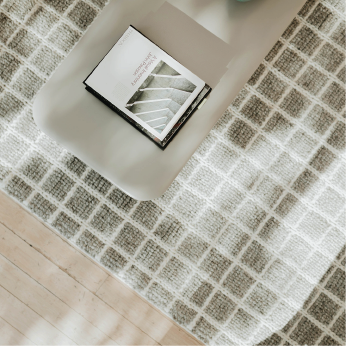
Rugs - The design freedom that comes with rugs adds warmth and movement to spaces. Rugs create a focal point, support comfort, and help diminish noise. Pull spaces together and make an inviting impression to support brand and organizational culture with the right rugs. Rugs don’t have to fill an entire room. Nor do they need to have a standard form. Using rugs of various shapes and sizes can help you create unique, inviting spaces that make people feel at home—whether at work, in social settings, or anywhere in between.

Lights - The Transformative Power of Light: When lighting is right, it’s brilliant. When it’s wrong, there’s little else you can focus on. Nothing transforms an environment like lighting, and nowhere is more important than the social and high-impression spaces that draw people in and reflect your brand. Lighting strategies can address the intersection of people’s needs—physical, cognitive, and emotional— to achieve desired outcomes.
In a Haworth research study, workspace characteristics, including lighting, influenced perceptions of inspiration. When people are inspired, they are more creative and generate ideas. When they’re more creative and productive, they’re happier at work. A thoughtful lighting design has many positive benefits, including influencing personal well-being and improving human performance.
For more thoughts or ideas, take a look at our Ancillary Lookbook or Envisioning Your Space Lookbook.
If you have questions and need more help choosing the right ancillary product for your organization, contact us today.
FOR MORE INFORMATION, PLEASE CONTACT
Michelle Sample
marketing@peoplespace.com

